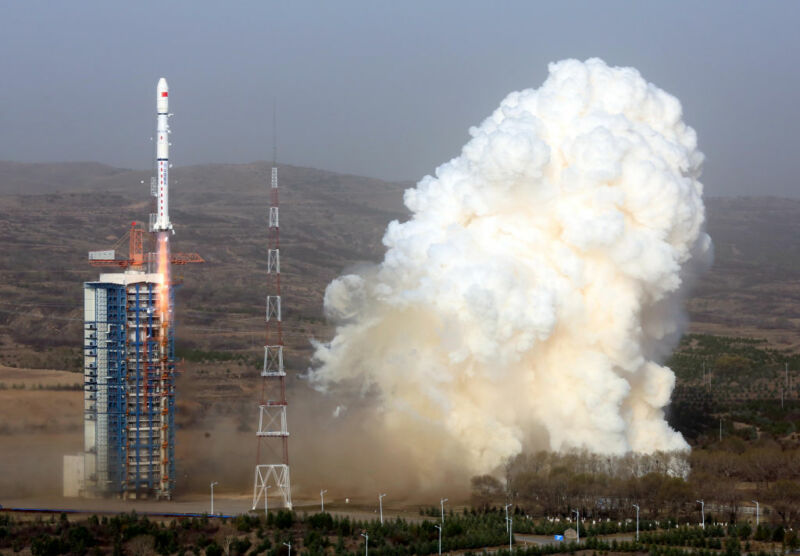Most of China's launch fleet is powered by hydrazine fuel and nitrogen tetroxide.
ERIC BERGER - 9/8/2020

Enlarge / A Long March 4B carrier rocket lifts off from the Taiyuan Satellite Launch Center in Taiyuan in north China's Shanxi Province in April, 2019.
Xinhua/Liu Qiaoming via Getty Images
On Monday, a Long March 4B rocket launched from China's Taiyuan Satellite Launch Center carrying a remote-sensing satellite. This 50-year-old spaceport is located in north-central China, about 500km to the southwest of Beijing.
As often happens with the first stages of Chinese rockets launching from the inland Taiyuan facility, the spent Long March 4B booster fell downstream of the spaceport. In this case, it landed near a school, creating a predictably large cloud of toxic gas.
Unlike most of the world's spaceports, several of China's launch sites are located at inland locations rather than near water to avoid such hazards. For security purposes, China built three of its major launch centers away from water during the Cold War, amid tensions with both America and the Soviet Union.
Some impressive footage from today's Long March 4B first stage return.
ℹ:https://t.co/9oRPoR0ZdF pic.twitter.com/SEl7t1u5xJ
— LaunchStuff (@LaunchStuff) September 7, 2020
In recent years China has begun to experiment with grid fins to steer its rockets back to Earth—and eventually to potentially land boosters like SpaceX does with its Falcon 9 rocket. However this project seems driven more by a desire to master reuse technology than to protect its population, as China has been launching from Taiyuan since 1968 with seemingly little regard for nearby residents.
Compounding the problem of dropping rocket first stages on the surrounding countryside is that China continues to use toxic hydrazine fuel for its first stages. Hydrazine, which is two nitrogens bound together by hydrogen atoms, is an efficient, storable fuel. But it is also highly corrosive and toxic.
When a Crew Dragon spacecraft exploded during a test in April 2019, it produced large clouds of toxic orange gas that could be seen for miles around on Florida beaches. These reddish clouds were caused by nitrogen tetroxide, the oxidizer that combusts with hydrazine fuel. This spacecraft—and many others in the past, including the space shuttle—used storable propellants for in-space operations. NASA has been working to find "green" propellants that would obviate the use of hydrazine for even in-space operations.
It is a different story for rockets, however. The use of hydrazine as a fuel for launch vehicles has been phased out for most of the world. The last major US rocket to use hydrazine was United Launch Alliance's Delta II rocket, which used the toxic fuel in its second stage. This rocket was retired in 2018. Russia's workhorse Proton rocket uses hydrazine for its first and second stages.
FURTHER READING Once again, a Chinese rocket has doused a village with toxic fuel
Yet the majority of China's launch fleet is powered by hydrazine fuel and nitrogen tetroxide oxidizer. This includes its human-rated Long March 2F rocket as well as the widely used Long March 4 family. All of these rockets, with their toxic first stages, launch over land and have caused numerous incidents over the years. These fuels are cheap and relatively easy to use, and it would have been natural for China to use them in the 1980s and 1990s when these boosters were developed. But their use continues unabated today.
China is slowly changing. Its new family of large rockets, the Long March 5 fleet, is fueled by liquid oxygen and kerosene, like SpaceX's Falcon 9 rocket. Paradoxically, however, the Long March 5 rockets typically launch from the Wenchang Spacecraft Launch Site—over the ocean.
ARS TECHNICA
No comments:
Post a Comment